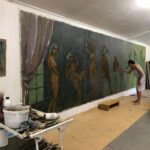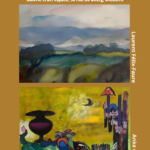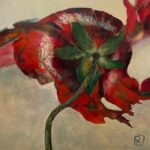Mireille Moser
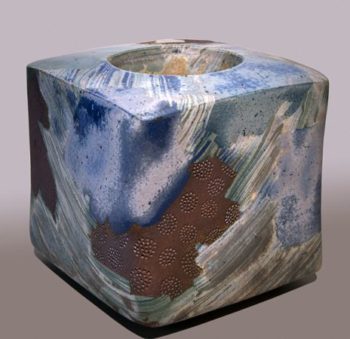
One does not know what one paints, what one writes
One does not know the secret in advance
One must trust the colours, the lines, the words, but what one wants is a secret
Only much later does the sense becomes clear.”
(Guy Gonffette from his book : Elle par bonheur, et toujours nue)
***
In my October blog post it was my pleasure to interview Jean-François Pereña who is of Spanish origin and the designer of superb jewellery. This month it is the turn of his companion Mireille Moser a top-ranking ceramist who shares his life in Rochebaudin. She comes from Switzerland where both have lived and worked before becoming successful artists and moving to France.

To become an artist and remain an artist is no simple matter. The job is not like any other. A workman, a civil servant and those who exercise a liberal profession are trained to perform predetermined tasks that serve society. They learn through study and/or experience what has already been laid out for them. Artists on the other hand, the real ones, don’t have that kind of prior knowledge to rest on. They are by definition creative souls who are expected to produce something that has not yet existed. This implies that they must constantly renew themselves and hope that what they make will be of sufficient appeal to buyers for them to earn a living. Those who choose to become an artist are faced by a big challenge and a lot of uncertainty as to whether their inspiration and other circumstances beyond their control will allow them to achieve their ambition. You only have to read the biographies of great artists to know how much courage, determination and perseverance are sometimes required to achieve success in the tricky field of art.

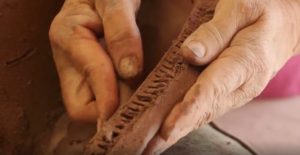
In my mind, the artist of this month’s blog post is the embodiment of the kind of determination I refer to above. Mireille Moser has talent and she is successful but looking back – in particular at her beginnings – it is clear that nothing was made easy for her. Being an artistic personality and a strong personality to boot, these qualities have helped her to overcome obstacles and accomplish what she set out to do at a very young age.
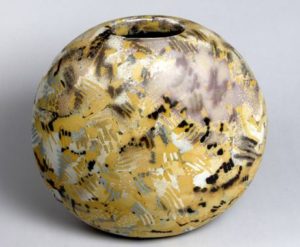
This is what she told me about her life and art. Mireille was still in her teens when aged 14 due to unforeseen circumstances she found herself without a family and left to fend for herself. A caring grandfather did help her financially to make it through school but the lookout for the future was grim. Fortunately, her art teacher having noticed her talent for drawing advised her to apply for the competitive exam with a view to gaining admission to the Ecole des Beaux Arts, the School of Fine Arts in Geneva. Although she was the youngest candidate Mireille passed the exam. That was when her life in art really all began; she was 16 years old and self-supporting, working and studying at the same time. The Preparatory classes lasted a year during which basic training in drawing, still life, perspective, modelling, moulding, etc. was provided at the end of which there were two options. She could continue her studies at the Ecole des Beaux Arts and at the same time if she wished she could register at the Ecole des Arts Décoratifs de Genève, the Geneva School of Decorative Art at the same time.
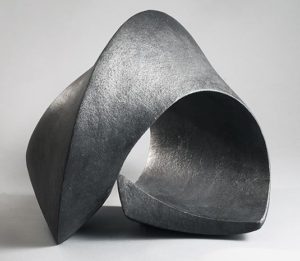
It was while she was considering her next step that Mireille discovered and was completely taken in by the importance and significance of volume in art. It came as a shock, like an epiphany, and she knew there and then that her future in art was all laid out: she would become a sculptor. So she enthusiastically joined the sculpture class of the Ecole des Beaux Arts where she had received her basic training. For someone who had been so excited by the prospect of working with her hands the course turned out to be a major disappointment. The whole educational system had shifted in order to adapt to conceptual art which at that time had become the latest trend in the art world. In the words of Mireille, it was all “Thought without the need to render concrete. As a result, classrooms were empty, and teachers were gone with the wind. In my position I could not afford to spend my time studying abstraction. I needed something solid, a craft with which I could earn a living.”
From 1971 to 1976 Mireille decided to pursue her studies at the Ecole des Beaux Arts but to register concurrently at the Ecole des Arts Décoratifs where she found an alternative to sculpture by attending ceramic courses and learn a craft that required manual work. Besides training to become an artist there were also bills to be paid for food and accommodation and Mireille was therefore obliged to do odd jobs here and there as a saleswoman, artist’s model, teaching pottery for children and anything else that came her way.

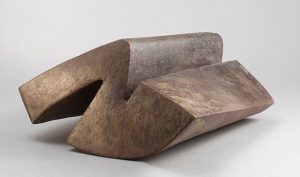
Soon after having obtained her degree Mireille, who is never at a loss when it comes to taking initiatives, joined the Centre Genevois d’Artisanat, the Geneva Crafts Center, an artist’s co-operative that ran a shop where the work of its members was sold and a gallery that held exhibitions. Within a short time, she became a member of the steering committee and one of the people responsible for the organisation of several exhibitions each year. These activities and creating her own ceramics in a shared studio as well as giving courses in the evenings in order to support herself was hard work. Around this time, she met Jean François who was to become her companion. All these activities were becoming too much and Mireille began to feel that she was in need of a rest. Jean-François who was involved in multiple cultural activities over and above the many exhibitions of his work agreed with her that the time was ripe for a break and to consider the future. In 1985 they took a sabbatical year travelling abroad after which by mutual agreement they decided to move from Switzerland to France. “We found a place in Rochebaudin where we could work undisturbed in peace. And, even if there are disadvantages from a professional point of view in being too far away from where the action is taking place, the luxury of living in close connection with our aspirations has allowed us to move forward artistically. We have also been very fortunate in establishing unexpected and rewarding contacts with museums and galleries.”

The decision by Mireille and Jean-François to move to France and withdraw from the hectic artistic life in Geneva was risky but it paid off and after the more than 30 years in their little village of Rochebaudin they can look back with the satisfying feeling of having realised their aim. The number of Mireille’s exhibitions in France and abroad, in Switzerland, Holland and even far away China as well as the awards she has received is certain proof that her work is in demand. When I discovered her ceramics for the first time I was immediately struck by their originality and how aesthetically pleasing they were. Part of at their appeal in my eyes was due to the subtle combination of a solid mass that characterises their volumes – whether they are angular, wrapped or curved – along with a very refined range of hues. “I want my volumes to be full and sturdy, and very well anchored by their weight.” It is hardly surprising that at the outset she had wanted to become a sculptor! Even when there is no colour and the clay is black the ceramics are moulded in such a way as to catch varying light falls making them very compelling objects to look at. In order to achieve an impression of solidity Mireille has developed a two layer technique by cutting out slabs of ferruginous chamotte sandstone (crushed pieces of broken clay) which she then coats with porcelain that has been coloured by means of cobalt and iron oxide, copper, chrome, and Vanadium applied in very thin layers on the sandstone surface, and then enamelling them. This she does as painters would, with a brush, a piece of cloth and even with her fingers.
See film
(by Gérard Fabbiani)
Summing up, Mireille is a genuine artist who constantly renews herself, and in her own words every piece of ceramics she makes is “an adventure” whether it is made for utility purposes or for beautiful aesthetical creations of forms, “volumes that are full and sturdy, and very well anchored by their weight.”
Posted in: Art
